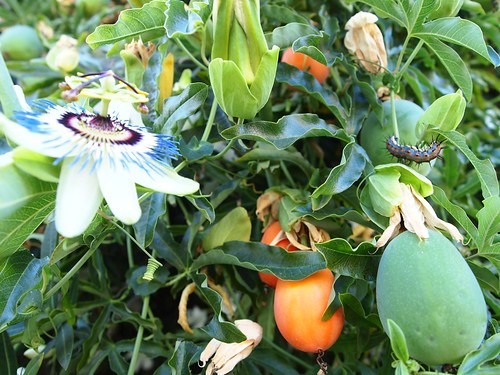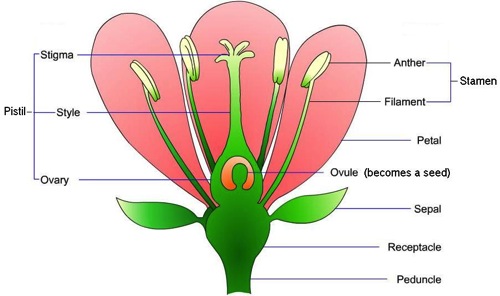
To paraphrase Old Possums Book of Practical Cats, “The naming of plant (parts) is a difficult matter. In this edition of Garden Vocabulary, we focus on the part of plant that most people ignore, even though is can be a large part of the decorative aspect of a flower.
It can take quite a bit of investigation and close observation to tell the difference between sepals and petals in some flowers. In this picture of a Passiflora flower, the long white structures all look to be petals, but according to my research, they are both sepals and petals interspersed around the plant.
Of course, we need not know everything about every plant perfectly but it can be interesting and fun to investigate new plants and flowers and see what you can learn.
What can you share about this Garden Vocabulary entry? Help educate us all in the comments!
Garden Vocabulary: Sepal
“A sepal (/ˈsɛpᵊl/ or /ˈsiːpᵊl/)[1][2][3] is a part of the flower of angiosperms (flowering plants). Collectively the sepals are called the calyx (plural calyces),[4] the outermost whorl of parts that form a flower. The word calyx adopted from the Latin calyx,[5] not to be confused with calix, a cup or goblet.[6] Calyx derived from the Greek καλυξ a bud, a calyx, a husk or wrapping, from Sanskrit kalika, a bud.[7] Usually green, sepals typically function as protection for the flower in bud, and often as support for the petals when in bloom.[8] After flowering, most plants have no more use for the calyx which withers or becomes vestigial, however, some plants retain a thorny calyx, either dried or live, as protection for the fruit or seeds. Examples include species of Acaena, some of the Solanaceae, and the water caltrop, Trapa natans. In some species the calyx not only persists after flowering, but instead of withering, begins to grow actively until it forms a bladder-like enclosure around the fruit. This is an effective protection against some kinds of birds and insects, for example in Hibiscus trionum and the Cape gooseberry.” — Wikipedia
- Latin Botanical Epithets – Augustifolia
- Bolting
- Soil pH
- Leaf Arrangement
- Nitrogen Fixaton
- Stoma
- Parasite/Parasitism
- Xeriscaping
- Deadhead/Deadheading
- Fungus
- Petal
- Fruit
- Cotyledon
- Epiphyte
- Humus
- Conifer
- Deciduous
- Hybrid/Hybridization
- Acclimatization/Acclimation
This Garden Vocabulary series seeks to introduce and explain to you — and in many cases, myself — words and terms associated with gardening. Please let me know if there are any terms you would like me to explore. You can leave your ideas in the comments section and we can learn together!

